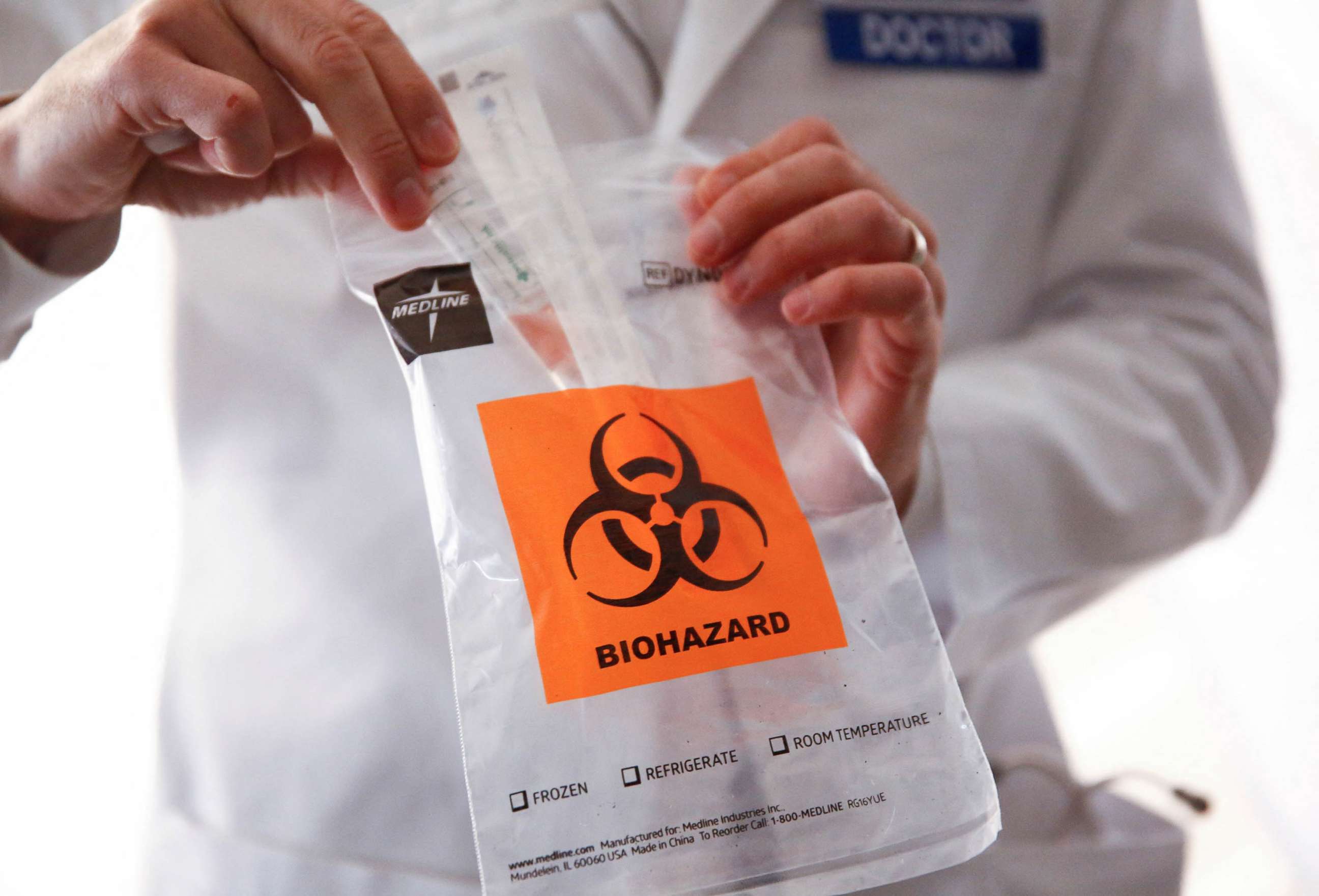NIH launches website for reporting at-home COVID test results
The data collected will be anonymous and sent to public health systems.
The National Institutes of Health has launched a website MakeMyTestCount.org which allows people to anonymously report the results of any brand of at-home COVID-19 test.
The website is a collaboration between the NIH and a healthcare technology company, CareEvolution.
"I think it's just incredibly important to celebrate HHS for this great technical advance, and the modernization of data systems in public health in the US," Blythe Adamson, Ph. D., CEO and Founder of Infectious Economics and former member of the White House Coronavirus Task Force, told ABC News.
Data collected is anonymous and sent to public health systems that receive test results from laboratories and doctor's offices. Users provide general information such as age and zip code and have the option to include race, ethnicity, sex, and symptoms, but it is not required.
"It's anonymous, which I think is important for people wanting to maintain their privacy. At the same time, it's also completely voluntary," Andrew Weitz, Ph.D., a program director at the NIH and co-lead of the project, told ABC News.
While anonymous data is vital to protect users, it also limits the detail that might be helpful to public health agencies.
"One of the challenges of using all the testing data that HHS has access to is that it's so de-identified that you can't tell if 10 tests are 10 people, or one person who's taken 10 tests," said Adamson.

Given the rise of at-home tests, accurately tracking the number of COVID-19 cases has become increasingly difficult.
"There have been about 2.5 billion home tests that have been produced for the U.S. market this year alone. And that number vastly outpaces the number of laboratory tests being done, so we have a blind spot right now in our data," Dr. Krishna Juluru, a Presidential Innovation Fellow at the NIH and co-lead of the project, told ABC News.
This new website may help provide scientists with a clearer picture of how many people are testing positive and may not require medical care which would normally alert public health systems of the positive test. More accurate data may allow public health departments to modify responses to address outbreaks and spread.
The possibilities and limits to the program are still unknown and need to be explored.
"A really important piece of this all, having this infrastructure set up and getting these data, is going to help us answer that question: how will we be able to use these data for public health purposes?" said Weitz.
There are some notable limitations of the self-report system, however, as not everyone has equal access to at-home tests or feels the incentive to report their test results.
"It's slightly older populations, higher educated populations, it's usually people in healthcare that recognize the value [of reporting test results]," said John Brownstein, Ph.D., chief innovation officer at Boston Children's Hospital and an ABC News contributor.
A study led by Brownstein in March suggested at-home test use varies by demographics. COVID at-home test use was highest among persons who identified as white, adults aged 30–39 years, those with annual household incomes of $150,000, and those with postgraduate degrees.
While experts say the first version of the new initiative may not be perfect, it holds promise for the future of public health as new viruses may continue to emerge.
"In the future, whether it's for COVID, or for monkeypox, or other outbreaks, this will be the type of tool that could be deployed very quickly," said Adamson.
It also may present an opportunity to change how sick people receive care in the future.
"I think the future of healthcare delivery will largely be, or more and more be, in a home setting… as a society, we need to become aware and become comfortable with this transition and start adapting to it" said Juluru.




